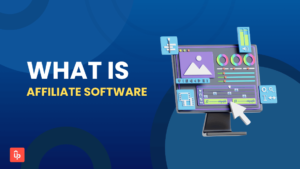In the crowded marketing world, reaching a wide audience is crucial. Many brands are turning to affiliate marketing to stand out and make money. This type of marketing helps engage people with new products, meet customer expectations, and create meaningful content.
Affiliate marketing accounts for 16% of all internet orders in the U.S. A whopping 81% of brands utilize affiliate programs as a strategy to enhance brand recognition and increase sales. It’s a rapidly growing approach, with affiliates being the most popular referral method.
Affiliate marketing is when a company pays someone (an affiliate) to bring in customers or leads for their products. These affiliates earn a set commission, usually when a sale happens, or a specific action is completed. It’s a teamwork model that often leads to creating affiliate networks involving several companies.
In this article, we’ll discover how an affiliate works, the power of an affiliate network and how to make the most of it as advertisers.
Let’s dive in!
What Is An Affiliate Network?
An affiliate network serves as a bridge between brands and publishers (such as bloggers, content creators, or influencers).
Brands set up programs on the platform, and affiliates can explore to find brands and products to promote.

Everything, from tracking results to handling payments, is managed within the network, similar to in-house management using affiliate link tracking software.
One prominent example of an affiliate network is ShareASale. They connect brands and affiliate marketers across the globe. Brands can find and work with many affiliates on this network, while ShareASale will handle all tracking, managing, and payment tasks.
How does an affiliate network work?
Affiliate networks are like matchmakers for individuals who want to promote stuff (affiliates) and companies selling things (brands).
Let’s look at how it works:
Affiliate Marketers Sign Up: Individuals interested in promoting products or services join the affiliate network to gain access to a variety of offerings.
Brands Recruit Affiliates: Brands utilize the network to identify and recruit affiliates who can effectively promote their products or services.
Affiliates Promote Products: Publishers, armed with unique content like blog posts, videos, or social media posts, actively promote the products or services they are affiliated with.
Tracking and Reporting: The affiliate network monitors the performance of each affiliate, tracking metrics such as clicks, conversions, and sales.
Commission Payments: Affiliates earn commissions based on their promotional performance. Commissions may be structured on a per-sale, per-lead, or per-click basis.
Network Support: Affiliate networks offer support and resources to both affiliates and brands. This assistance aids in campaign optimization, ensuring maximum earnings for both parties.
Utilizing an affiliate network allows brands to tap into a wider pool of affiliates while benefiting from the network’s expertise. Meanwhile, publishers discover new opportunities to promote products and services, earning commissions for their efforts.
Why Start an Affiliate Network?
Companies can go directly to individuals who can help sell your products/services, but using an affiliate network is usually easier and safer.
These teams handle many things needed for selling through others so businesses can focus on other parts of their work.
Let’s look at some of the best advantages that affiliate networks can bring to brands.
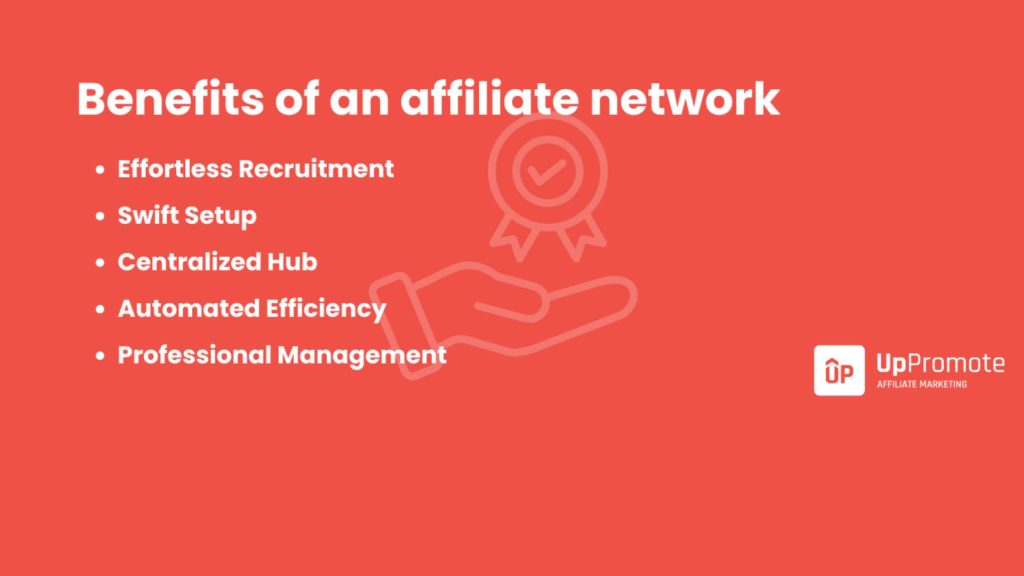
Effortless Recruitment
Using an affiliate network makes it easy to find affiliates. You get access to a group of affiliates who have already signed up in the network, saving time and simplifying the process of discovering and recruiting partners.
People who want to help sell our products have to ask to join your program, and your team will approve them before joining in. This way, you only get promoted by the right folks.
If you want to do it on your own, you have to find people individually, which takes a lot of time.
Being on a network means our program is out there for many good people to see, and these networks have many different people who can help us sell our stuff.
Swift Setup
Setting up your affiliate program on a network is a straightforward process. It’s quick and easy, allowing you to launch your affiliate marketing activities without any unnecessary delays or complications.
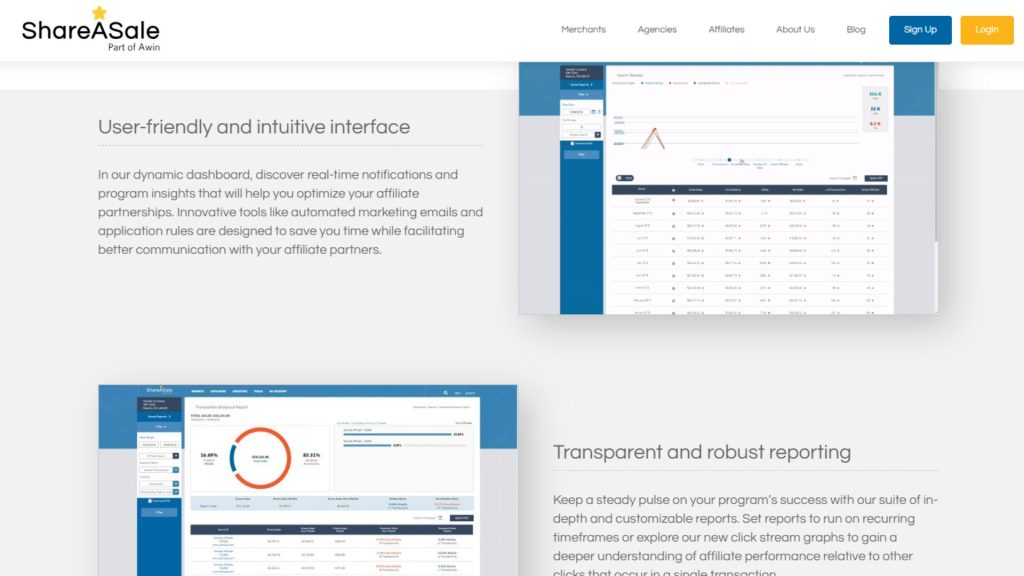
With this seamless setup, you can swiftly get your program off the ground, saving you valuable time.
No need for complex steps or long waits – it’s a quick and efficient way to start your affiliate program, ensuring a smooth experience. This simple setup lets you enjoy the benefits of partnerships sooner.
Centralized Hub
Think of an affiliate network as your one-stop shop for everything in affiliate marketing. It’s a place where you can easily handle all aspects of your affiliate program hassle-free.
From finding and managing affiliates to keeping track of how well things are going and paying your partners – it’s all right there in one spot.
No need to jump around different tools or websites; it’s like having everything you need in a simple and easy-to-use place. This makes finding and teaming up with affiliates smooth, and you can see how well your partnerships are doing in real time.
It just makes affiliate marketing simpler and more straightforward.
Automated Efficiency
Affiliate networks make your affiliate marketing experience smoother by automating various tasks. This hands-off approach allows you to actively participate without being bogged down by time-consuming processes.
These networks automatically track sales, clicks, and other metrics, providing real-time insights. They handle commission payment model, manage affiliate relationships, provide marketing promotional materials, monitor performance, implement fraud protection, and offer analytics.
Affiliate networks ease the process by automating these tasks, letting you focus on creating content, building relationships, and growing your business. It’s like having a helpful assistant to handle essential aspects of your affiliate marketing journey.
Professional Management
Top networks, like Awin, offer more than just a platform—they provide expert account management and consultation services. This professional touch ensures your affiliate program runs optimally, allowing you to focus on other aspects of your business.

3 common types of affiliate networks
Affiliate networks come in three types: in-house, third-party, and hybrid.
They differ in features, brands, and entrepreneurs they partner with. Each type has unique costs and experiences for working with affiliates.
Let’s explore them below.
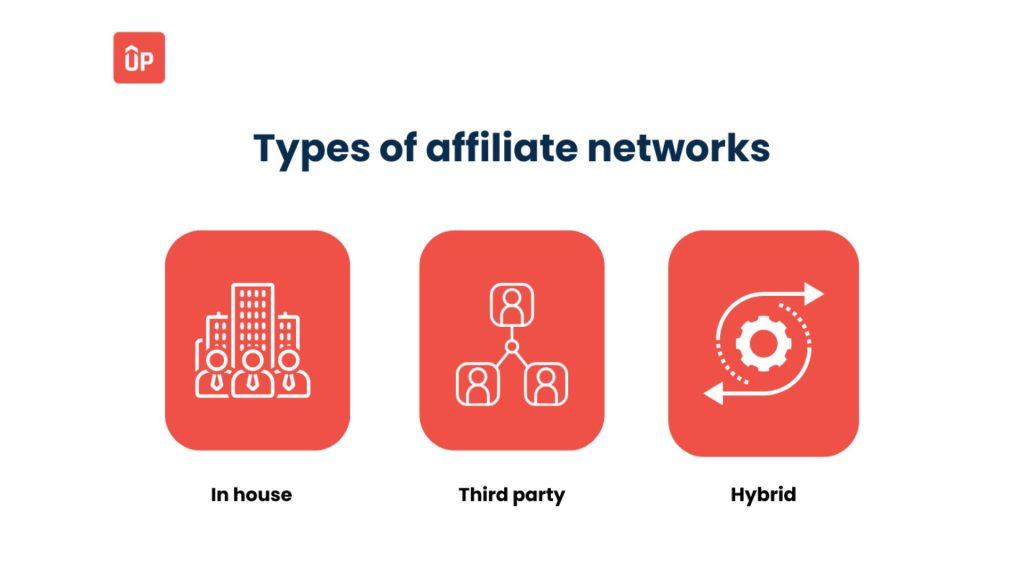
In-house affiliate network
A company can set up an in-house affiliate network if it wants to handle things independently. This means creating and managing its own affiliate program.
To do this, they have to:
Install the software
- Appoint a dedicated affiliate manager
- Ensure compliance with laws
- Reach out to potential merchants
- Handle tech issues
- Foster relationships with affiliates
- Analyze data
- Adapt strategy to market changes
Setting up an in-house affiliate network involves a lot of effort and can be a substantial upfront cost. Many small or new businesses might lack the required funds and time.
These businesses may not have the expertise in-house and might need to hire new staff or collaborate with freelancers to start the affiliate marketing project.
However, in-house networks provide maximum control. If you’re unhappy with existing affiliate network platforms, you can create your own system.
You also can add exciting features when available rather than waiting for an external affiliate network to adopt them.
Despite the initial expenses, a well-optimized system can ultimately be more cost-effective than relying on a third party.
Third-party affiliate network
If creating everything from scratch feels too overwhelming, consider partnering with a third party.
It provides the functionalities for tracking sales, managing commissions, and facilitating payments between merchants and affiliates.
The external party handles:
- Platform development
- Adding analytics and features
- Addressing IT and legal matters
- Recruiting affiliates
- Researching market trends
Third-party affiliates allow you to bypass the complexities of developing an in-house network, letting you focus on expanding your customer base.
By using a third-party network, merchants can access a larger pool of affiliates and benefit from the network’s expertise and support. However, they also incur network fees and have less direct control over the program than an in-house affiliate network.
Hybrid affiliate network
A hybrid affiliate network is a combination of both in-house and third-party affiliate programs. It allows companies to have more customization and control while still benefiting from the ease of use of a third-party system.
This can involve using reliable affiliate network software, inviting entrepreneurs to join the platform, and offering additional features such as seamless payment processes and convenient communication channels.
Another way is to gradually create a list of reliable affiliates while you use third-party network services.
Additionally, a hybrid affiliate program can refer to a co-marketing program that uses two or more types of communication systems
Factors to consider
The surge in affiliate programs has brought about a quick rise in the variety of available affiliate networks.
Wondering which is best for your brand? Consider these criteria:
Reliability
When choosing an affiliate network, first, you should go for one that’s like a reliable friend. Look for networks that have a good history, work smoothly, and are honest about how they operate.
Affiliate marketing networks depend on having a good reputation and earning trust. It all begins with the affiliate network itself. When did it start? How many entrepreneurs are part of it? Has it worked with companies like yours in your field?
Yes! You should do some research on the network that you are considering.
Checking what people say about it is crucial. Word of mouth is powerful, and online reviews can tell you a lot.
Also, look beyond good or bad experiences – see how they handled problems. Were brands and active publishers happy with how things got sorted? Also, check if the network’s approach fits with your needs.
It’s like asking friends for advice before making a big decision.
Correct niche
Think of choosing an affiliate network, like picking friends with similar interests. It’s important that the network matches what your brand is all about. This way, the people you reach through the network will be interested in your offer.
Going for a network that fits your industry makes your marketing efforts more effective and connects you with affiliates who understand your world.
For example, if you are an organic beauty products niche business. You can opt to partner with the ShareASale affiliate network.
Why?
ShareASale hosts numerous programs, making it suitable for niche markets. For an organic beauty products firm, affiliates can promote and earn commission rates on unique, natural beauty items offered by various merchants on ShareASale.
Fee and payment terms
Being clear and open is crucial. No surprise fees or tricky details hidden in contracts – this applies to brands and publishers.
Yet, there’s more to consider when planning your affiliate marketing budget.
Affiliate marketing programs differ a lot in how they work.
But that’s not the only thing to consider when planning your affiliate marketing and advertising budget.
Take, for example, Walmart’s affiliate program, which uses a volume-based commission setup. If affiliates sell a lot, they get a higher commission.
Other programs might change the commission based on the type of product sold. Some pay every month, while others wait until a certain commission threshold is reached before paying out.
Each program has its own rules, a bit like different games with their own set of instructions.
Affiliate management and customer support
Good affiliate management and helpful customer support are crucial for a smooth affiliate marketing journey.
A network with strong tools makes it easy for everyone to get started, communicate well, and understand how things are going. Check how much help they give to both brands and affiliates – it’s important that questions get answered quickly.
You can also dig into the affiliate platform’s FAQ or shoot them a message to find out the important stuff, such as:
How much support do brands receive?
What about the affiliates?
If something goes wrong, how do you get help? Do they sort it out fast?
What if your company’s needs change?
Quality and quantity of affiliates
The strength of an affiliate network lies in the quality and quantity of its affiliates. A diverse pool of affiliates increases your brand’s potential reach.
However, prioritizing quality over quantity ensures that your products are promoted by affiliates with genuine engagement and influence.
You also should assess the network’s screening process for affiliates to gauge the level of commitment to maintaining a high standard.
A balanced approach that values quality and quantity contributes to a well-rounded and effective affiliate marketing strategy.
So, when diving into the world of affiliate networks, remember these simple things. I
It’s like finding the right group of friends – you want those who are trustworthy, share your interests, are clear about money matters, make things easy, and bring the right vibes to the table.
How to leverage from an affiliate network?
An affiliate network is a powerful tool in your sales toolbox. But, like any tool, it only works well if you know how to use it. The effectiveness of your affiliate network depends on how well you manage your affiliate marketing efforts.
Having a solid plan isn’t just about the ads you put out there. It should also be a strategy for finding and building strong relationships with the right affiliates.
Keep reading to find the best tactics to get the most out of an affiliate network.
Have a clear affiliate marketing plan
The cornerstone of a successful affiliate network is a meticulously crafted marketing plan. This blueprint delineates the merchant’s objectives, defines the target audience, and establishes key performance indicators (KPIs).
Ask yourself some questions such as:
- Is your approach centered around initiating buzz by commencing with smaller publishers and gradually escalating to larger ones over several weeks?
- Are you primarily focused on boosting lead generation, or does brand building take precedence?
To make the most of working with affiliate networks, it’s vital to outline your plan for affiliate marketing and set up ways to measure how well it’s working.
Offer good commissions and incentives
Big influencers are often busy and might not have space in their plans for your affiliate marketing. Conversely, smaller social media influencers with a loyal audience are picky about what they promote.
To get these affiliates interested, you can offer a good and promising commission rate to encourage them to join.
Choosing a commission rate for different niches involves considering factors like product pricing, industry standards, and profit margins.
Higher-priced products may allow for lower percentage commissions, while industry benchmarks guide competitiveness. Ensure that the commission maintains a viable profit margin after expenses.
You can consider offering higher rates during peak seasons for added motivation. Start with a fair rate and adjust based on performance, using a trial-and-error approach to find the optimal commission for your specific niche and business.
Build relationships with publishers
Building strong business relationships with affiliates is a gradual yet valuable process. Beyond the initial sign-up, consider taking extra steps to foster a productive partnership:
Research: Understand the affiliate’s brand, persona, and social media presence to align your strategies effectively.
Incentives: Clearly outline rewards, incentives, and commissions to motivate and engage affiliates.
Transparency: Be open about potential challenges, such as shipment delays, to maintain trust and manage expectations.
Personalization: Segment email lists for personalized newsletters, demonstrating a tailored approach to each affiliate.
Communication: Foster open communication, answering queries promptly and providing necessary information.
Feedback: Actively seek feedback to enhance the partnership and address concerns or improvements.
Investing time and attention into these aspects can cultivate lasting and mutually beneficial relationships with your affiliates.
Secured your networks from frauds
Keeping the affiliate network trustworthy is crucial to prevent fraud. Merchants can use advanced tracking and strict verification processes to detect and stop dishonest activities.
In affiliate marketing, common fraud includes fake clicks and placing unauthorized cookies to claim undeserved credit for sales. To tackle these issues, merchants can use multiple layers of fraud detection, checking the source and pattern of traffic and monitoring for unusual click patterns.
It’s essential for merchants to regularly check affiliate activities, provide clear guidelines, and keep open communication to address any concerns.
A secure network protects against potential threats and builds trust, creating a safe space for business.
Create an enticing reward system
To make joining an affiliate network enticing for brands, designing a reward system that affiliates find appealing is crucial.
One effective approach is a tiered commission structure, where affiliates earn higher percentages as they achieve more sales, motivating them to stay committed.
Take a look at this example:
- Starting Tier: Affiliates earn a standard 10% commission on each sale.
- Mid-tier Success: Surpassing 50 units in a month upgrades affiliates to the next tier.
- Mid-tier Reward: In the mid-tier, affiliates enjoy a boosted 15% commission on all sales.
- Top-tier Excellence: Achieving 100 units elevates affiliates to the top tier.
- Top-tier Bonus: Affiliates in the top tier receive an attractive 20% commission on every sale.
This tiered commission structure motivates affiliates with increasing rewards as they achieve and exceed sales targets.
Adding performance bonuses for reaching specific goals and exclusive incentives, like early access to promotions, adds extra excitement.
Communicating these rewards clearly is important, ensuring affiliates understand what they can earn and building trust.
By creating a system that aligns with affiliates’ interests and recognizes their efforts, brands can establish a positive and mutually beneficial relationship within the affiliate network.
Track results & earn profits
When using an affiliate network, keeping track of results is crucial for ongoing improvements and maximizing profits. Affiliate tracking software plays a vital role in this process by helping monitor progress, earnings, and campaign effectiveness across an affiliate channel through real-time reports.
The network will offer you with:
Real-time reporting: you can promptly see which affiliates are driving sales and assess the performance of different campaigns.
Commission structure flexibility: you can get access to flexibility to set up varied commission structures for different affiliates or campaigns.
Integrations: the network can seamlessly integrate with your shopping website backend or payment gateway, streamlining processes for efficiency.
By regularly checking your affiliate tracking results, you can optimize your affiliate strategy, identify areas for improvement, and maximize your profits. Once everything is set up and running smoothly, take a break and enjoy the benefits of your hard work.
Examples of Affiliate Networks
Affiliate networks play a crucial role in connecting advertisers with publishers and facilitating mutually beneficial partnerships in the world of online marketing.
Here are some examples of prominent affiliate networks:
Awin

Awin is a popular affiliate network platform that connects with over 15,000 advertisers and generated over $150 million in sales in 2019 alone.
With a user-friendly interface and a wide range of tools, Awin helps businesses create and manage successful affiliate programs. They provide detailed analytics and reporting to track performance.
Needless to say, Awin is the top-choice affiliate network in the market.
Awin goes the extra mile by giving personalized recommendations for partners based on what your business needs.
Their reporting dashboard is like a window into your ads’ performance in real-time. They also have a cool feature called SingleView that helps determine which ads work best for your money.
For those who want a bit more, Awin offers special plans. Awin Accelerate helps automate tasks, more flexible reports, and personal advice. Awin Advanced gives you full access to everything, personalized reports for your business and unlimited ways to set commissions.
If you’re into tech, Awin has a directory to find the right tech partners for your marketing needs.
With all these features and support, Awin is a great pick for anyone diving into the affiliate marketing world.
ClickBank
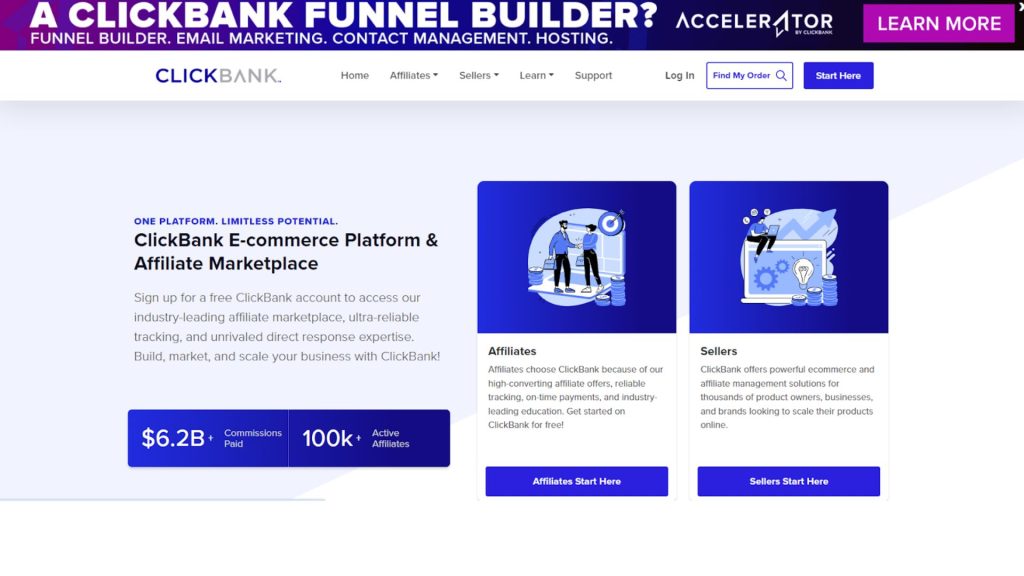
ClickBank is a big global retailer with its own marketplace, helping sellers and entrepreneurs boost their sales through a global network of affiliates.
There are over 4,000 products from thousands of sellers trusted by more than 5 million people. The ClickBank affiliate marketplace is popular for its high-converting offers in different areas.
For advertisers, ClickBank has an advertising program that lets them use targeted display ads to attract more affiliates. This includes ads on login pages, dashboards, and the marketplace, along with email blasts, banners in ClickBank emails, and opportunities on social channels and events.
Advertisers can pick their ad package, express interest by submitting a form, and enjoy benefits like ads reaching interested affiliates, customizable packages with expert help, and proven product promotion effectiveness.
CJ Affiliate

CJ Affiliate, previously known as Commission Junction, has been around for over 20 years and is part of the Fortune 500 Alliance Data Systems company. It’s one of the biggest affiliate networks and stands out with features like a selection of big brand names such as Zappos and Verizon, making it appealing to successful affiliates and boosting conversions.
The platform is user-friendly, providing useful tools for both publishers and advertisers. CJ Affiliate covers a wide range of programs, from automotive to gardening.
This network offers a global reach with 15 offices worldwide and over 3,000 merchants, ensuring a broad audience. The platform uses advanced technology and industry expertise for a smooth experience.
It also connects advertisers with integrated tech and data partners, allowing them to make the most of existing tools.
ShareASale
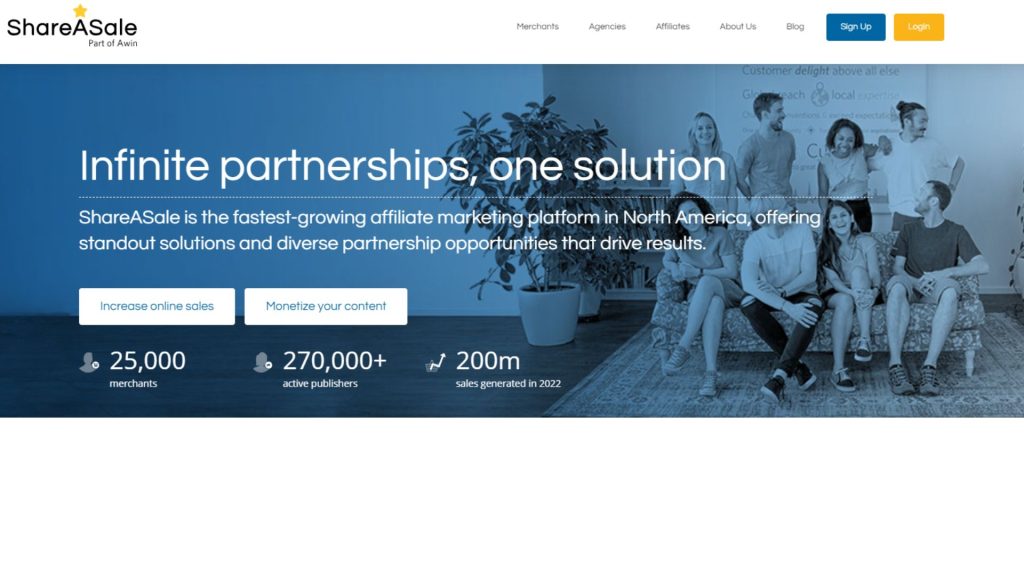
ShareASale is a well-established affiliate network offering a broad range of products and programs for affiliate marketers. Its user-friendly interface and extensive list of merchants make it a valuable tool for those looking to profit from their content.
Some popular brands collaborating with ShareASale include Zulily, Wayfair, Reebok, and Warby Parker.
However, some users have expressed concerns about the outdated website design, special characters in affiliate links, and a higher commission payout threshold (a minimum of $50) than other networks.
Despite these drawbacks, ShareASale remains popular, boasting over 4,000 programs and a relatively straightforward sign-up and approval process.
For merchants, ShareASale could be an excellent choice, thanks to its large pool of potential affiliates and diverse program options for promotion.
Rakuten Advertising

Rakuten Advertising is a global network focused on performance advertising, offering customer acquisition solutions and affiliate marketing services.
With advanced technology, a diverse range of top-tier partners, and expertise in affiliate marketing, it provides merchants with an extensive reach and opportunities to connect with leading partners and exclusive consumer brands.
Joining this network is recommended for merchants aiming to broaden their reach and enhance performance through affiliate marketing.
Rakuten Advertising’s affiliate marketing services aim to assist brands in creating better ad experiences, connecting with the right affiliate partners, and accessing comprehensive benchmarking and reporting tools.
Overall, its wealth of experience and resources make it an attractive choice for merchants seeking to grow through affiliate marketing.
FAQs
Who is involved in an affiliate network?
In an affiliate network, key players include merchants (brands or sellers), affiliates (publishers or influencers), and the network itself. Merchants provide products or services, affiliates promote them, and the network facilitates the partnership, tracking sales, and managing affiliate commission payout.
Should I use an affiliate network or an affiliate software?
Choosing between an affiliate network and software depends on your needs. An affiliate network is suitable for those seeking a ready-made platform with a network of affiliates. Affiliate marketing tracking software is ideal for those wanting more control and customization, managing their own affiliate program. Consider your goals and preferences before deciding.
When should I use an affiliate network?
Use an affiliate network when you want to quickly establish connections with a diverse pool of affiliates, streamline program management, and benefit from the network’s infrastructure. It’s particularly useful if you prefer a hassle-free approach to affiliate marketing and seek a broader reach for your products or services.
How do affiliate networks get paid?
Affiliate networks typically earn revenue through a combination of setup fees, monthly fees, and a percentage of the commissions generated by affiliates. Merchants who run affiliate programs pay these fees to the network for the services, technology, and network of affiliates provided, facilitating the smooth operation of their affiliate marketing efforts.
How much do affiliate networks charge users?
The charges for using affiliate networks can vary. They often involve setup fees, monthly subscription fees, and a percentage of the affiliate commissions. Fees can range from a few hundred dollars to a percentage of the total transaction value. The specific costs depend on the affiliate network and the services it offers.
How to become an affiliate network?
To establish an affiliate network, conduct thorough research, set up a legal entity, and develop the required technology for tracking and managing affiliates. Recruit affiliates by highlighting the benefits and offering competitive commissions.
Launch and actively promote your network to attract both merchants and affiliates. Provide ongoing support for the success of participants. Ensure compliance with legal requirements and industry standards throughout the process.
Wrapping up
And there you have it!
We’ve explored the world of affiliate networks, uncovering the what, why, and how of finding the perfect one for your business.
Just like a skilled gemologist with tools in hand, you now have what it takes to examine each aspect of an affiliate network and see if it’s the right fit.
But, this isn’t a “set it and forget it” deal.
Regular checks, adaptability, and adjustments are crucial to keep your affiliate marketing strategy flourishing. Continuously monitor, learn, and tweak as needed. Like steering a ship, adjusting to changing winds and currents is key to reaching your destination.
Choosing the right affiliate network is just the start.
It’s the first step on your journey to a successful affiliate marketing program. So, take that step confidently. You’ve got the knowledge, insights, and strategies to make it work.
We hope this guide empowers you to find the full potential of affiliate marketing and takes your business to new heights.
Success is a marathon, not a sprint.




